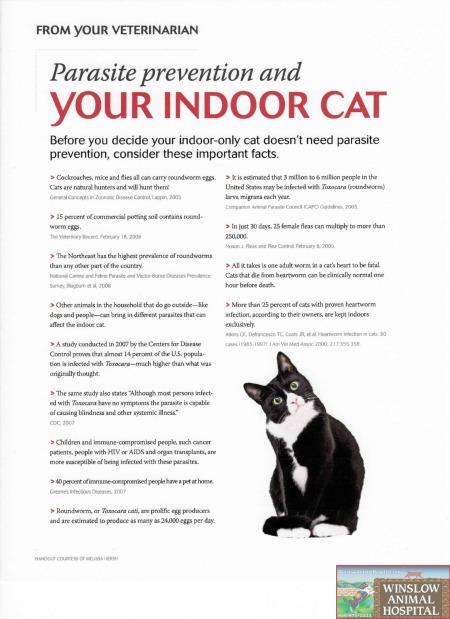
Before you decide that your indoor-only cat does not need parasite prevention, consider these important facts:
- Cockroaches, mice and flies all can carry roundworm eggs. Cats are natural hunters and will hunt them!
- 15 percent of commercial potting soil contains roundworm eggs.
- The Northeast has the highest prevalence of roundworms than any other part of the country.
- Other animals in the household that do go outside – like dogs and people – can bring in different parasites that can affect the indoor cat.
- A study conducted in 2007 by the CDC proves that almost 14 percent of the U.S. population is infected with Toxocara (Roundworms) – much higher than what was originally thought.
- The same study also states “Although most persons infected with Toxocara have no symptoms, the parasite is capable of causing blindness and other systemic illness.”
- Children and immune-compromised people, such as cancer patients, people with HIV or AIDS and organ transplants, are more susceptible to infection with these parasites.
- 40 percent of immune-compromised people have a pet at home.
- Roundowrm, or Toxocara cati, are prolific egg producers and are estimated to produce as many as 24000 eggs per day
- It is estimated that 3 million to 6 million people in the United States may be infected with Toxocar larva migrans each year.
- In just 30 days, 25 female fleas can multiply to more than 250,000.
- All it takes is one adult worm in a cat’s heart to be fatal. Cats that die from heartworm can be clinically normal one hour before death.
- More than 25 percent of cats with proven heartworm infection, according to their owners, are kept indoors exclusively.
For a printable PDF of this information as well as sources, click here! (.pdf)


